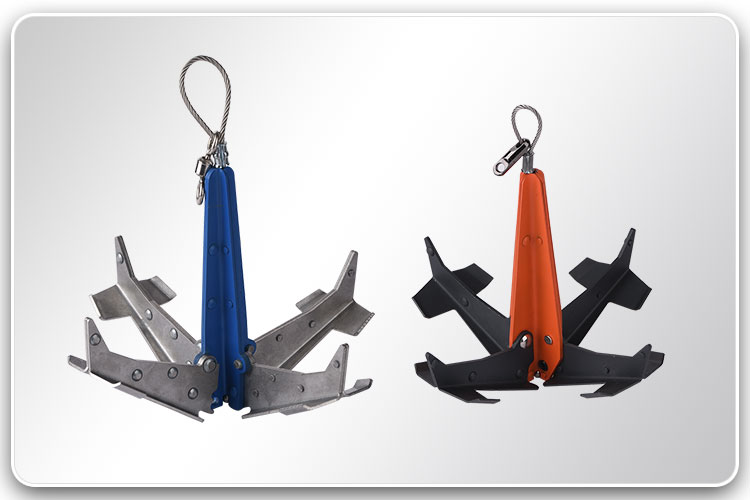Types of canoe anchors
2023-11-04
A canoe anchor is a device used by canoeists and kayakers to secure their boat in a specific location, preventing it from drifting with the current or wind. Canoe anchors are essential for maintaining stability and control when fishing, swimming, or simply taking a break during a paddling trip. They come in various styles and sizes to suit different types of canoes and kayaks, as well as the conditions in which they will be used. Here are some common types of canoe anchors:
1. Mushroom Anchor: This type of anchor features a mushroom-shaped head with a long shaft. It is designed to hold securely in soft or muddy lake or river bottoms. Mushroom anchors are relatively lightweight and easy to handle, making them a popular choice for recreational canoeing.
2. Grapple Anchor: Grapple anchors, also known as claw anchors or river anchors, have multiple flukes or arms that help them grip onto rocks, logs, or the riverbed. They are suitable for securing canoes in moving water or areas with a rocky or uneven bottom.
3. Bruce Anchor: Bruce anchors have a plow-like design, with a single fluke that can dig into various types of bottoms, including mud, sand, and gravel. They are versatile and work well in a variety of water conditions.
4. Folding Anchor: Folding anchors are compact and easy to stow in a canoe. They usually have four flukes that fold together for storage and open up when deployed. They are versatile and can be used in a range of bottom types.
5. Drag Anchor (or Drift Sock): A drag anchor is used to slow down the movement of a canoe in strong currents or windy conditions. It doesn't anchor the canoe in one place but provides resistance to drifting.
When using a canoe anchor, it's important to consider the type of water you'll be navigating and the weight and size of your canoe. The anchor should be appropriately sized for your boat and the conditions you expect to encounter. Additionally, you'll need a length of anchor line (rope) to connect the anchor to your canoe. Proper anchoring techniques and safety precautions should be followed to ensure the anchor is secure and can be easily retrieved.



